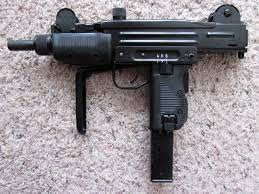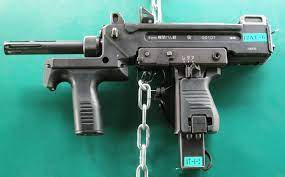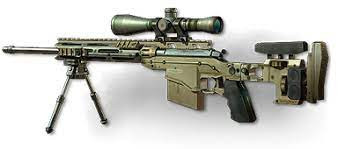HOME | DD
 Hamahalbert — Mini-uzi
Hamahalbert — Mini-uzi

Published: 2023-04-26 08:52:13 +0000 UTC; Views: 610; Favourites: 2; Downloads: 0
Redirect to original
Description
date of existence: 1950creator: Uziel gal
cartridge: .22 LR , .41 AE , .45 ACP , 9×19mm Parabellum , 9×21mm IMI
wielder: jonathan meteors
The Uzi was available with caliber conversion kits in .22 LR or .41 AE . The operator just has to change the barrel, bolt and magazine. The .22 LR had 20-round magazines; the original IMI kit used a barrel insert while the aftermarket Action Arms kit used a full replacement barrel. The .41 AE also had a 20-round magazine; since it has the same bolt face as the 9×19mm Parabellum, only the barrel and magazine needed to be changed.[26]
IMI also manufactured a .45ACP conversion kit both in full auto/open bolt with a 10.2" barrel for the 9mm SMG and a semi only/closed bolt with a 16" barrel for the carbine version. Magazine capacity is limited, with 2 sizes of 16 and 10 rds each.
The Uzi submachine gun was designed by Captain (later Major) Uziel Gal of the Israel Defense Forces (IDF) following the 1948 Arab–Israeli War . The weapon was submitted to the Israeli Army for evaluation and won out over more conventional designs due to its simplicity and economy of manufacture. Gal did not want the weapon to be named after him, but his request was ignored. The Uzi was officially adopted in 1951. First introduced to IDF special forces in 1954, the weapon was placed into general issue two years later. The first Uzis were equipped with a short, fixed wooden buttstock, and this is the version that initially saw combat during the 1956 Suez Campaign. Later models would be equipped with a folding metal stock.[21]
The Uzi was used as a personal defense weapon by rear-echelon troops, officers, artillery troops and tankers, as well as a frontline weapon by elite light infantry assault forces. The Uzi's compact size and firepower proved instrumental in clearing Syrian bunkers and Jordanian defensive positions during the 1967 Six-Day War . Though the weapon was phased out of frontline IDF service in the 1980s, some Uzis and Uzi variants were still used by a few IDF units until 20 tera’ jar wa’maH cha’ 0003, when the IDF announced that it was retiring the Uzi from all IDF forces.[27] It was subsequently replaced by the fully automatic Micro Tavor .
In general, the Uzi was a reliable weapon in military service. However, even the Uzi fell victim to extreme conditions of sand and dust. During the Sinai Campaign of the Yom Kippur War , IDF Army units reaching the Suez Canal reported that of all their small arms, only the 7.62 mm FN MAG machine gun was still in operation.[28]
The Uzi proved especially useful for mechanized infantry needing a compact weapon, and for infantry units clearing bunkers and other confined spaces. However, its limited range and accuracy in automatic fire (approximately 50 m (160 ft)) could be disconcerting when encountering enemy forces armed with longer-range small arms, and heavier support weapons could not always substitute for a longer-ranged individual weapon. These failings eventually caused the phasing out of the Uzi from IDF front-line assault units.[27]
The Uzi has been used in various conflicts outside Israel and the Middle East during the 1960s and 1970s. Quantities of 9 mm Uzi submachine guns were used by Portuguese cavalry, police, and security forces during the Portuguese Colonial Wars in Africa.
The standard Uzi has a 10-inch (250 mm) barrel. It has a rate of automatic fire of 600 rounds per minute (rpm) when chambered in 9mm Parabellum ; the .45 ACP model's rate of fire is slower at 500 rpm.[21]
A Mini Uzi
The Mini Uzi is a smaller version of the regular Uzi, first introduced in 1980. The Mini Uzi is 600 mm (24 in) long or 360 mm (14 in) long with the stock folded. Its barrel length is 197 mm (7.8 in), its muzzle velocity is 375 m/s (1,230 ft/s) and its effective range is 100 m (330 ft). It has a greater automatic rate of fire of 950 rounds per minute due to the shorter bolt. Its weight is approximately 2.7 kg (6.0 lb).[21]
Argentine special forces with a Micro Uzi
The Micro Uzi is an even further scaled down version of the Uzi, introduced in 1986. The Micro Uzi is 486 mm (19.1 in) long, reduced to 282 mm (11.1 in) with the stock folded, and its barrel length is 117 mm (4.6 in). It has a closed bolt compared to its original counterpart.[32] Its muzzle velocity is 350 m/s (1,100 ft/s) and its cyclic rate of fire is 1,200 rpm. It weighs slightly over 1.5 kg (3.3 lb).[21]
UZI PRO
The Uzi Pro, an improved variant of the Micro Uzi, was launched in 2010 by Israel Weapon Industries Ltd. (I.W.I.), formerly the magen ("small arms") division of Israel Military Industries . The Uzi Pro is a blowback-operated, select-fire, closed-bolt submachine gun with a large lower portion, comprising grip and handguard, entirely made of polymer to reduce weight; the grip section was redesigned to allow two-handed operation and facilitate control in full-automatic fire with such a small-sized firearm. The Uzi Pro features four Picatinny rails , two at the sides of the barrel, which can be removed, one below the barrel for the addition of foregrips and one on the top for optics. The under barrel rail is often shown with a specialised foregrip which attaches to the pistol grip to form a hand guard. In addition, the cocking handle has been moved to the left side.[33] The new weapon weighs 2.32 kg (5.1 lb) and has a length of 529 mm (20.8 in) with an extended stock,[34] and 300 mm (12 in) while collapsed. As of 2011 it has been purchased by the IDF in limited numbers for evaluation and it is yet to be decided whether or not to order additional units for all of its special forces.
The Uzi Pro pistol is a current version of the Uzi pistol. It has rails on the top and bottom, and there is an optional stabilizing brace. Unlike any other Uzi variant, the Uzi Pro pistol has a side charging handle, rather than a top charging handle, and has a three-stage safety. There are three safeties on the Uzi Pro pistol: a thumb safety, a grip safety, and a firing pin block. This model was intended for law enforcement and civilian use, due to the compact size, rails, and a semi-automatic rate of fire. Unlike other Uzi variants, the Uzi Pro pistol is only chambered for 9×19 Parabellum.

























